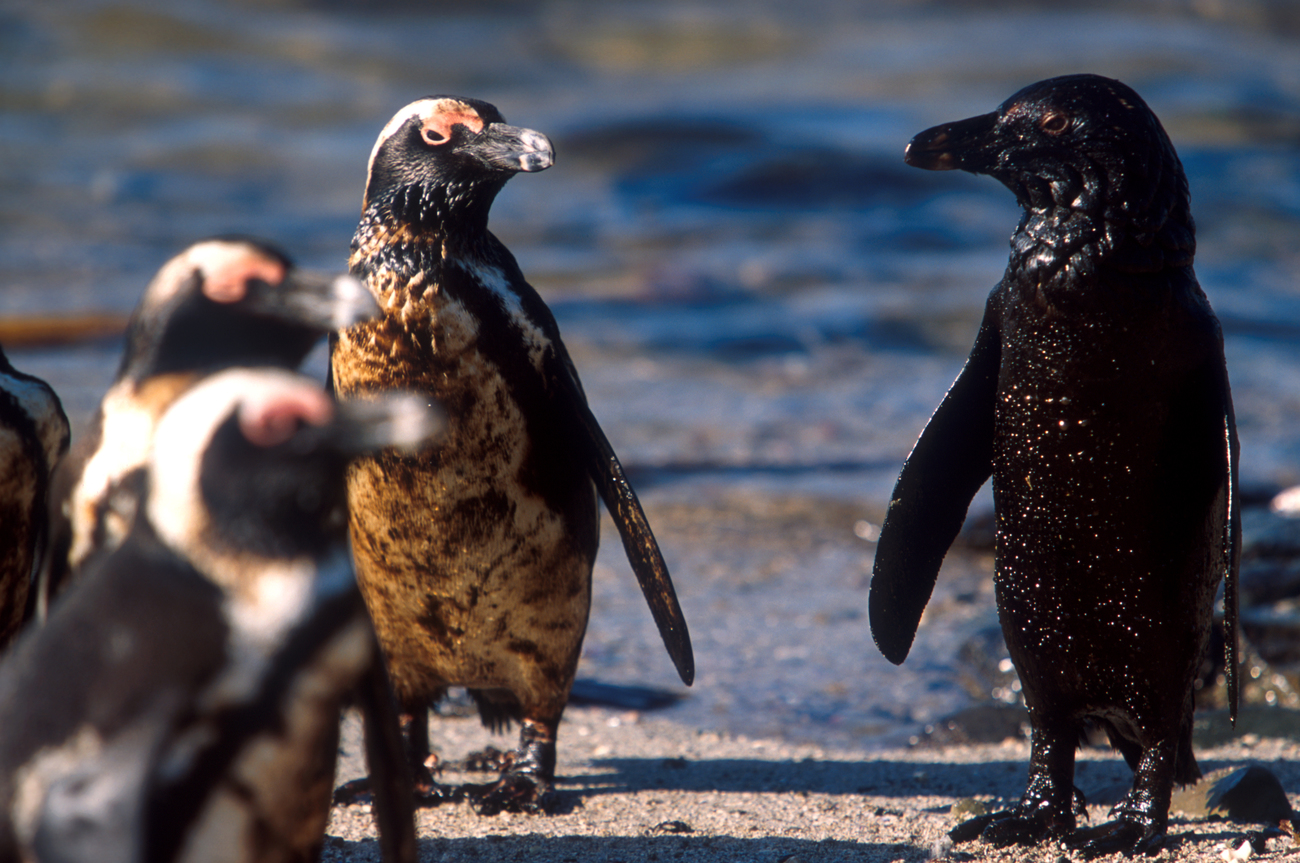Blog
Discover the four layers of the forest—and the animals living in it
Read morethe anniversary of the world’s largest animal rescue mission that saved the African penguin

Twenty years ago, on 23rd June 2000, the MV Treasure cargo ship sank just off Cape Town, South Africa. Within hours, thick bunker oil started to wash ashore on the mainland and islands that support the largest colonies of critically endangered African penguins.
Robben Island, the famed prison island of Nelson Mandela, was one of the penguin colonies that was worst affected. Ferries that normally carried tourists to visit the prison volunteered their support to transport rescue teams and boxes of oiled penguins. Further up the coastline, ski boats surfed the breakers into Yzerfontein fishing harbor with boxes of birds from Dassen Island – the larger of the two colonies. Every rescued bird required 30 minutes of individualized care from volunteers who used a toothbrush to clean the oil out of the bird’s feathers. More than 45,000 volunteers dedicated their time to care for the penguins and over 130 international experts came to Cape Town to help.
As one of the IFAW staff on site during this mission, I’m writing to remind us of the extraordinary feat of cooperation and ingenuity that enabled us to successfully pull off this incredible rescue mission. IFAW played a critical role in the response by supporting the Southern African Foundation for the Conservation of Coastal Birds (SANCCOB), the lead organization tasked with rescuing and rehabilitating sea birds in Southern Africa. The International Bird Rescue (IBRRC) also mobilized and joined our efforts to make our success possible.
The media coverage was extraordinary. Our life or death rescue mission to save the penguins led global headlines for days, attracting support and help from celebrities and ordinary people around the world. People arrived with bags full of used toothbrushes to wash the birds. A frozen dessert company installed fridges to provide icy treats for volunteers. Generous women in Australia knitted boxes full of jackets to prevent the penguins from catching colds.
The best part of the rescue mission was the release of the healthy, clean penguins. You’ll notice in the pictures that all the penguins have a pink blotch on their chests to identify them as a rescued and rehabbed animal. I still remember standing on the beach the moment the first group of penguins were released. The boxes opened up and within less than a minute, the bewildered penguins realized their surroundings and dashed to the ocean. It still makes me cry thinking about it today.
About 40,000 African penguins were rescued or moved to safety during the oil spill. Without this multi-team cooperation, it is thought that the African penguin species might have died out by 2010. Instead, we were able to save the species from extinction and perform the world’s largest animal rescue operation to date.
I’d like to recognize the efforts of two individuals who played important roles in the operation, but are sadly no longer with us: Jay Holcomb, the Executive Director of the IBRRC who was key to the success of this rescue, and Jon Hrusa, whose incredible photography will forever remind us that human actions impact nature.
-Christina Pretorius, Communications Manager, South Africa
Every problem has a solution, every solution needs support.
The problems we face are urgent, complicated, and resistant to change. Real solutions demand creativity, hard work and involvement from people like you.
Unfortunately, the browser you use is outdated and does not allow you to display the site correctly. Please install any of the modern browsers, for example:
Google Chrome Firefox Safari